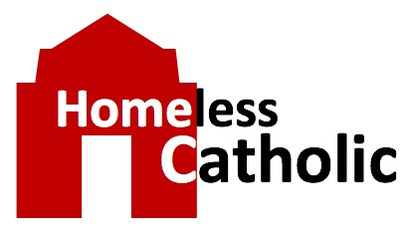My Way
And now, the end is near
And so I face the final curtain
My friends, I'll say it clear
I'll state my case of which I'm certain
I've lived a life that's full
I traveled each and every highway
But more, much more than this
I did it my way.
This is the beginning of the song “My Way”, famously sung by Frank Sinatra and released in 1969. It became his signature song. Sinatra's version of "My Way" spent 75 weeks in the UK Top 40 Charts, a record which still stands.
So what does this song have to do with today’s readings?
My Way / HIS Way
By Steve Leininger
http://www.usccb.org/bible/readings/060620.cfm
2 Timothy 4:1-8
Mark 12:38-44
And now, the end is near
And so I face the final curtain
My friends, I'll say it clear
I'll state my case of which I'm certain
I've lived a life that's full
I traveled each and every highway
But more, much more than this
I did it my way.
This is the beginning of the song “My Way,” famously sung by Frank Sinatra and released in 1969. It became his signature song. Sinatra's version of "My Way" spent 75 weeks in the UK Top 40 Charts, a record which still stands.
So what does this song have to do with today’s readings?
I’m dyslexic and have attention deficit disorder. Sometimes when I read or hear things, it triggers a random but often related thought. That happened when I was reading through the first reading from 2 Timothy. The phrase that set off my lapse of attention was:
. . . and the time of my departure is at hand.
I have competed well; I have finished the race; I have kept the faith.
From now on the crown of righteousness awaits me, which the Lord, the just judge, will award to me on that day, and not only to me, but to all who have longed for his appearance.
[2 Timothy 4:6-8]
The similarity and contrast between the song and the New Testament verses, at least from my perspective, caused me to dig a bit deeper.
Who was Timothy and why did he write this?
I started by finding out more about Timothy and why he would write this. I can hear those more studied in the ways of the Bible screaming already. “Timothy didn’t write this!!” They would be correct. In Christian tradition, the Four Evangelists are Matthew, Mark, Luke, and John, the authors attributed with the creation of the four Gospel accounts in the New Testament that bear the following titles: Gospel according to Matthew; Gospel according to Mark; Gospel according to Luke and Gospel according to John. One might conclude the book title 2 Timothy would indicate it was the second book Timothy wrote. One would be wrong. The more complete title for this book is, “Second Epistle of Paul to Timothy.” OK, that means we are reading the words of Paul the Apostle.
In the quest for knowledge so I don’t make that mistake again, I wanted to know more about Paul’s epistles. The Pauline epistles, also called Epistles of Paul or Letters of Paul, are the thirteen books of the New Testament attributed to Paul the Apostle. Here is the list: Romans, First Corinthians, Second Corinthians, Galatians, Ephesians, Philippians, Colossians, First Thessalonians, Second Thessalonians, First Timothy, Second Timothy, Titus, and Philemon. I’ve learned something today!!
Three of the letters, First and Second Timothy and Titus, form a distinct collection of letters addressed not to congregations but to those who shepherd congregations These letters were first named “Pastoral Epistles” in the eighteenth century because they all are concerned with the work of a pastor in caring for the community or communities under his charge. All three suggest they were written late in Paul’s career some 30 years after the crucifixion of Jesus. Today’s first reading came from Paul’s Second Letter to Timothy. We are back to my earlier question, which, re-phrased, becomes, “Who was Timothy and why was Paul the Apostle writing to him?”
Who was Timothy and why was Paul the Apostle writing to him?
Timothy was born in Lystra, in present day Turkey, the son of a Greek father and a Jewish mother. His mother and grandmother were early Christian converts and raised Timothy in the faith. He was probably exposed to the missionary teaching of St. Paul on Paul’s first visit to Lystra. Returning to Lystra at the beginning of his second missionary trip in the year 50 A.D., Paul found Timothy so esteemed by the local Christians that he asked Timothy to join him in spreading the Gospel on his missionary journeys. Because of his Greek father, Timothy had not been circumcised. In Acts 16:1-3, Paul had him circumcised to ensure Timothy's acceptability to the Jews whom they would be evangelizing.
Timothy traveled with Paul and Silas (a leading member of the Early Christian community) and helped found churches, notably in Corinth, Thessalonica, and Philippi. Timothy later accompanied Paul to Ephesus and Asia. During Paul’s imprisonment at Ephesus, Timothy is mentioned favorably by name in the first verses of the Paul’s letters to the Colossians, Philemon, and Philippians.
In various writings, Paul referred to Timothy not only as “child” and “son,” but as “brother” and “co-worker.” It is because of this long-term relationship of mentoring and respect that Paul knows he can trust Timothy to carry on the mission of spreading the good news of Jesus.
What was Paul writing to Timothy about?
The First Letter of Paul to Timothy insists on the need to shun unorthodox teachings and dangerous speculations and reiterates the qualities expected of bishops and deacons. It exhorts Timothy to fulfill his duties faithfully and to instill in his congregation traditional beliefs, notions of proper conduct, and respect for one another.
The Second Letter of Paul to Timothy similarly urges Timothy to “guard the truth that has been entrusted to you by the Holy Spirit” and to accept his share of suffering “as a good soldier of Christ Jesus.” He is further admonished to “have nothing to do with stupid, senseless controversies” and to avoid “men of corrupt mind and counterfeit faith.”
Didn’t we start with a Frank Sinatra song?
Yes, we did! If you remember, the song was triggered by some random thoughts, and I followed up on them. I now have a better understanding of the structure of the New Testament and a bit about the breadth of Paul the Apostle’s contributions spanning 13 books. I found out about Timothy, a protégé and traveling companion of St. Paul. I learned that the epistles 1 Timothy, 2 Timothy, and Titus were written as pastoral guidelines, not a message for the congregations.
Both the song “My Way” and the letter to Timothy referred to end of a successful and prolific life-long journey.
In “My Way,” Frank Sinatra sings about the challenges he has met and overcome along the way. But he is ultimately satisfied, because, as he says, he did it “my way.”
In today’s reading from 2 Timothy 4, Paul is concluding his directives and, looking back over his life, proclaims:
“the time of my departure is at hand. I have competed well; I have finished the race; I have kept the faith. From now on the crown of righteousness awaits me, which the Lord, the just judge, will award to me on that day, and not only to me, but to all who have longed for his appearance.”
He did it HIS way.
Postscript
I learned a couple things that didn’t really fit into today’s reflection but seemed to me to be relevant enough to mention here.
Frank Sinatra told songwriter Ervin Drake in the 1970s that he "detested" singing the song, because he believed audiences would think it was a "self-aggrandizing tribute," professing that he "hated boastfulness in others."
While at odds with organized religion for a good part of his life, Sinatra turned to the Roman Catholic Church for healing after his mother died in a plane crash in 1977. He died as a practicing Catholic and had a Catholic burial.

